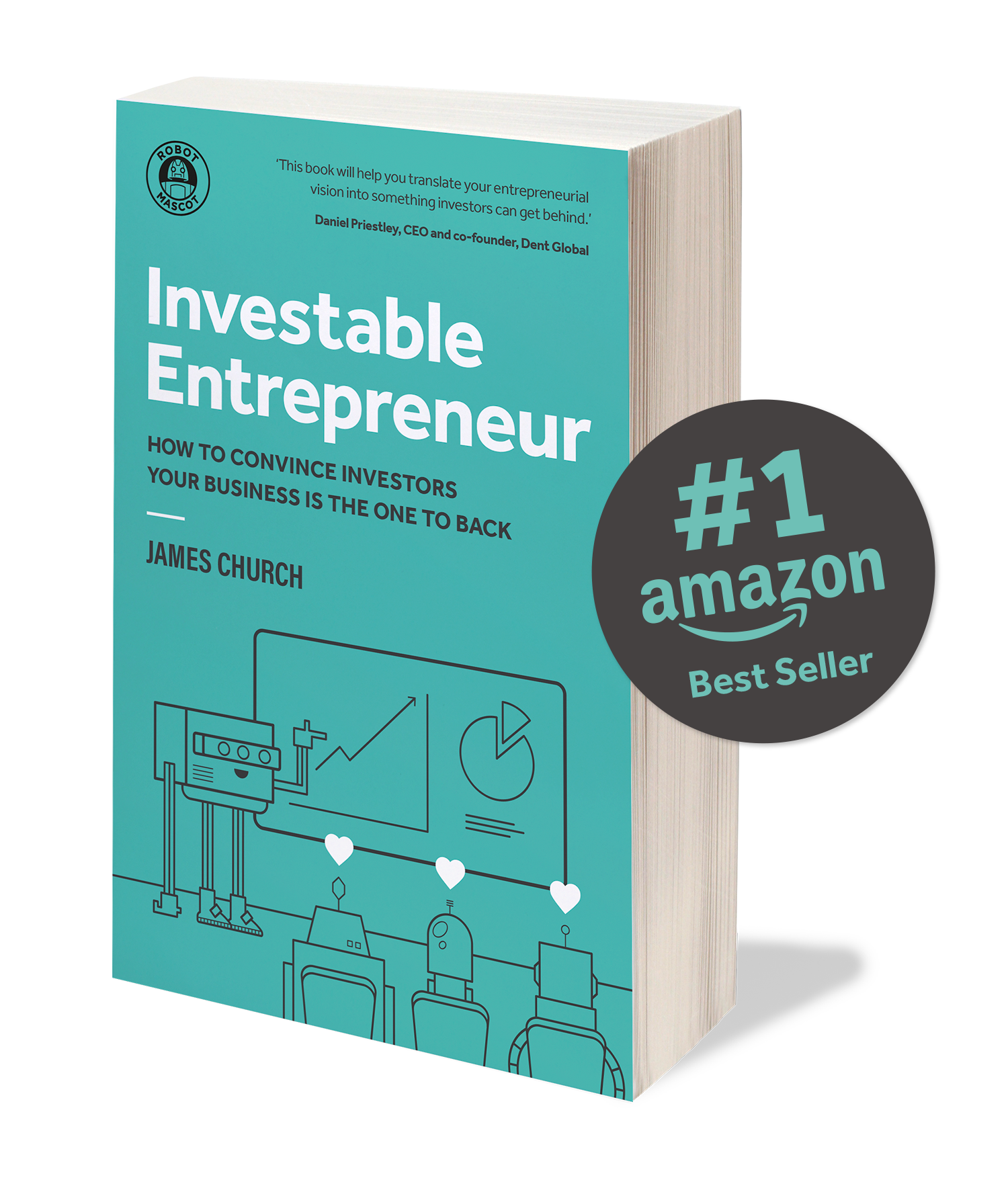

How To Raise Capital For Business: The Most Effective Methods & Processes
5th September 2024
How to Raise Capital for Your Business
Raising capital for business growth is a crucial step in the development of every start-up. This comprehensive article, ’11 Capital Raising Strategies’, will provide detailed and valuable information to help start-ups understand and navigate the diverse financing landscape. Whether you’re wondering how to raise capital for a new business or seeking the best way to raise capital for startup ventures, this guide will assist you.
Jump to the following sections:
Scaling your business: what does it mean and how to do it?
In this article, we aim to explain the different ways to raise capital, including traditional methods of raising capital such as business loans and venture capital, and more modern approaches like crowdfunding and incubator programmes.
Each method will be explored in depth, providing information on what it involves, how it works, and why a start-up might choose it. This will help you understand the best ways to raise capital for your specific business needs.
We also include practical steps on how start-ups can approach these financing methods, supported by examples of successful applications. Developing a solid business plan for raising capital is crucial in this process.
Whether your start-up is in its early stages and self-funded or in later stages looking at private equity, this article provides the necessary knowledge to make informed decisions about your capital raising strategy. Understanding the capital raising process and having a clear business plan to raise capital can make all the difference.
Related: Don’t Leave It Too Late to Raise Startup Investment
How To Raise Capital: Debt Or Equity?

Raising capital for business is often categorised into two main streams: equity financing and debt financing. Each of these mechanisms offers distinct advantages and limitations and are selected based on the strategic needs, long-term vision and financial health of the business.
Equity Financing
Equity financing involves selling a portion of your business to investors in exchange for capital. It’s akin to inviting new partners on board who share both the rewards of success and the risks of failure. With this arrangement, investors become equity holders, and their investment becomes a part of the company’s equity capital.
Often, businesses veer towards equity financing when they’re in their nascence or during periods of aggressive growth, wherein they can justify the dilution of ownership due to the potential for significant return on investment. For instance, many tech startups lean towards this approach, attracting venture capitalists who provide not just funding, but also guidance and valuable networking opportunities.
READ: In A Startup, How Do Shares, Equity, And Dilution Really Work?
Debt Financing
Debt financing operates much like a traditional loan, where funds are borrowed from a financial institution or private lenders and must be paid back over a stipulated time frame with interest. As such, the control of the company remains unchanged, as there is no equity dilution.
Debt financing might seem an ideal choice for well-established businesses with steady revenue streams that can absorb regular repayments.
Remember that the decision between equity and debt financing is not black and white, but a spectrum of choices. Each option brings unique challenges and opportunities, influenced by factors, from market conditions to the specific operational and growth needs of the business. Understanding these methods of raising capital for a company can help you choose the best way to raise capital for your startup.
Indeed, many companies employ a blend of both, crafting a finely-tuned financial strategy to achieve their business objectives. In essence, selecting the right capital-raising strategy is a delicate balancing act, one that can determine the trajectory of the enterprise’s journey.
How To Raise Capital For A Startup: 11 Capital Raising Strategies
1. Fund It Yourself/Bootstrapping

What it is
Funding your startup yourself, or ‘bootstrapping’, is the route often chosen by new businesses. At the heart of this strategy is the reliance on one’s own resources, grit and determination to launch and sustain the business. This method is one of the different ways to raise capital without external debt or equity.
How it works
Bootstrapping is where entrepreneurs ignite their venture using personal savings, reinvested profits, or any other self-generated funds, completely side-stepping external funding. This means that every pound spent is hard-earned and carefully scrutinised, fostering a culture of prudence and calculated risks. When considering how to raise capital for a business, bootstrapping can be an effective but challenging method.
Why choose this method?
Start-ups may opt for this route to maintain complete ownership and control, unencumbered by external investors or loan repayments. It’s an especially suitable choice when the business model is lean, with low initial outlay, and has a quick path to profitability. For example, an accountancy start-up may choose to bootstrap, as their primary resources—brainpower and laptops—require less upfront investment compared to a high-tech software business or resturant.
Gaining experience before scaling with external funding
“Bootstrapping can be a great stepping stone. A lot of the most successful entrepreneurs started out by bootstrapping their first venture for two or three years. They built it up themselves, sometimes selling it, winding it down, or moving on. That first bootstrapped business gives them hands-on experience and, sometimes, the profits to help get their next venture off the ground.
“We sometimes see first-time founders jumping straight into seeking funding before they’ve tried bootstrapping – which can be a great way to understand the mechanics of business: what works, what doesn’t. Bootstrapping teaches a founder to be prudent with every pound and that experience becomes invaluable if they choose to pursue funding later on.
“However, while bootstrapping is fantastic for building a business foundation, it can only take you so far. Many of our clients come to us after bootstrapping for a couple of years because they’ve reached a ceiling. They’ve hit that point where their working capital – just their profits – only gets them so far. They need additional funding to break through that barrier and really scale.
“So while bootstrapping gives valuable experience and can lead to incredible self-funded success stories, there often comes a point when external funding becomes essential to achieve larger growth.”
James Church, Robot Mascot co-founder
Guidance
If a start-up opts for this path, the primary steps should be to meticulously manage cash flows, cut extraneous expenses, and make every penny count. The initial focus should be on reaching profitability, not exponential growth. Take the example of Spanx’s founder, Sara Blakely, who started with just $5,000 in savings and a compelling product. She bootstrapped the company, handling everything from product design to sales and marketing. Today, Spanx is a billion-dollar business, exemplifying the potential power of bootstrapping.
However, it’s crucial to underscore that while bootstrapping provides freedom and full ownership, it can take much more time to reach your ultimate goals, as your resources to invest in growth are limited. It also demands a robust financial plan, tenacity, and a willingness to shoulder the risk solo. It’s a path of great courage and conviction, often forming the backbone of many entrepreneurial success stories.
READ: What You Should Know About Bootstrapping Phase
2. Business Loans
What it is
Securing a business loan is a time-honoured strategy for raising capital. This method of financing involves borrowing a fixed sum from a bank or financial institution, which is then repaid over a designated period with accrued interest. For many, this is the best way to raise capital for a startup when other methods aren’t viable.
How it works
Business loans function like any other loan, with the business itself acting as the borrower. The lender provides the capital, and the business commits to returning this amount, plus interest, in a series of scheduled repayments. This financing method allows a business to access considerable funding while maintaining complete ownership of the company.
Why choose this method?
Start-ups might opt for business loans when they have a solid business plan, a proven revenue stream, and a decent credit history, making them eligible for competitive interest rates. For instance, a start-up brewery, already successful at a small scale, might use a business loan to finance the acquisition of larger brewing equipment, facilitating increased production and wider distribution.
Guidance
To navigate this path, start-ups should firstly ensure they possess a strong business plan, robust financial projections, and a clear strategy for utilising the loan towards profitable growth. They’ll need to shop around to find the most favourable interest rates and loan terms. Consider the case of Coffee Republic, a UK-based coffee chain. In its early stages, it was financed through bank loans, which helped the brand establish its first few shops, thereby securing its foothold in the competitive café market.
Remember that a business loan, while a useful tool, also carries the responsibility of regular repayments, regardless of business performance. Thus, it demands careful planning, and should ideally be complemented by a stable revenue stream.
3. Microloans
What it is
As the name suggests, microloans are small, short-term loans typically used to aid businesses in need of a minor capital infusion. These loans are especially beneficial for microenterprises, small-scale businesses, or start-ups requiring a modest amount of funding to launch or expand their operations. This method of raising capital can be particularly useful for entrepreneurs wondering, ‘how can I raise capital for my business with limited resources?’
How it works
A business borrows a small amount – often ranging from a few hundred to several thousand pounds – from a lender, typically a non-traditional financial institution or non-profit organisation. The business then repays the loan over a predetermined period, with interest.
Why choose this method?
A start-up might choose a microloan when their funding needs are minimal, or when they find it challenging to secure funding through conventional means due to lack of collateral or a limited credit history. For example, a small online boutique might opt for a microloan to purchase initial inventory or to cover the costs of setting up a professional website.
Guidance
Embarking on the microloan path requires a clear understanding of the business’s financial needs, a detailed business plan, and an awareness of the potential lenders in the marketplace. Lenders like the Prince’s Trust offer microloans, alongside mentorship and guidance for young entrepreneurs.
While microloans offer an accessible entry point to business financing, it’s important to note that these loans often carry higher interest rates than traditional bank loans due to the perceived higher risk.
4. Crowdfunding

What it is
Crowdfunding is an increasingly popular method of raising capital, in which funds are collected from a large number of people, usually via the web. This digital-age financing strategy essentially leverages the power of collective backing to bring ideas to life. For many startups, this is among the best ways to raise capital while simultaneously validating their business idea.
How it works
Crowdfunding operates by appealing to the masses. An entrepreneur pitches their business idea or product on a crowdfunding platform, and interested individuals can contribute a specified amount towards the funding goal. In return, they might receive a token of appreciation, early access to the product, or even a small stake in the company, depending on the type of crowdfunding.
Why choose this method?
This method of financing is often chosen by start-ups that want to validate their business idea, engage with potential customers, and avoid the constraints and commitments of traditional financing. For example, a start-up developing a new mass-market food product might use crowdfunding to not only raise funds but also to gauge the market’s interest in their product.
Building a community of advocates
“Crowdfunding is brilliant for building an army of followers.
“Businesses who crowdfund often end up with a loyal community of people who love their product, tell their friends about it and actively advocate for it because they’re now investors. It can lead to huge viral growth, which is one of the biggest positives of crowdfunding.
“It’s like running a marketing campaign that pays for itself. You get the exposure, the buzz and the followers, plus the added bonus of capital to grow.
“On the downside, crowdfunding means inviting hundreds, sometimes thousands, of small investors into your company. While they don’t have individual say or voting power – they’re grouped under a syndicate – handling the campaign can be time-consuming. Whether someone’s investing a tenner or ten grand, it’s a personal decision and they often want to ask questions and feel involved.”
James Church, Robot Mascot co-founder
Guidance
To successfully execute a crowdfunding campaign, a start-up needs a compelling story, an attractive product or service, and an effective marketing strategy. They should select a suitable platform, such as Kickstarter, Seedrs or Crowdcube, and create a persuasive campaign that resonates with potential backers. One of the best known success stories is that of Brew Dog, a craft beer brand that has raised over £40 million via numerous crowdfunding rounds on Crowdcube, thanks to a great product, exciting brand and a vibrant community of backers.
However, while crowdfunding has the allure of community engagement and market validation, it also requires significant effort in campaign management and often places product delivery expectations on relatively young businesses. Still, if navigated adroitly, crowdfunding can be an excellent springboard, propelling a start-up from idea to reality with the backing of a supportive crowd.
READ: Crowdfunding: The Complete Beginner’s Guide
5. Angel Investment
What it is
Angel investment, often the first external funding source for a start-up, refers to capital provided by affluent individuals, known as ‘angel investors’. These benefactors offer financial backing, usually in exchange for equity, to fledgeling businesses, and frequently bring their business acumen and network to the table as well. Angel investment is a popular method of raising capital for startups that have high growth potential but lack sufficient initial funding.
How it works
In the dynamics of angel investment, these high-net-worth individuals offer capital, typically from their personal wealth, to a start-up they believe has high growth potential. Unlike institutional investors, angels are often less driven by immediate returns and more focused on the long-term success of the start-up.
Why choose this method?
Start-ups might court angel investment when they are too nascent for venture capital but have outgrown the funds available from friends, family, or personal savings. For instance, a biotech start-up developing an innovative medical device might appeal to an angel investor due to the high cost of R&D and the long timeline to profitability.
Guidance
For start-ups seeking angel investment, it’s crucial to have a robust business plan, demonstrable traction, and a clear vision. They need to network extensively, pitch at angel groups and be prepared for extensive due diligence. A prime example of successful angel investment is Google, which received $100,000 from an angel investor in its initial stages, a pivotal step in its ascendancy to becoming a global tech giant.
While angel investment can provide crucial capital and invaluable mentorship, it often involves significant equity dilution. Hence, start-ups should be strategic about the terms of the deal, ensuring that the value gained – in both capital and experience – makes the stake given away worthwhile.
READ: A Complete Guide To Angel Investors For Small Businesses And Startups
6. Personal Contacts
What it is
Raising capital from personal contacts – often referred to as a ‘friends and family round’ – is a commonly utilised method of financing during a start-up’s early stages. This approach involves securing funding from people within the entrepreneur’s personal network, such as friends, family members, or close acquaintances. This can be one of the quickest ways to raise capital for a business when formal funding avenues are not yet accessible.
How it works
In this mode of financing, the entrepreneur approaches individuals from their personal network, presenting their business idea and seeking financial backing. These funds are typically informal investments, often based on personal relationships and trust, rather than rigorous financial scrutiny.
Why choose this method?
Start-ups may opt for this funding route when they are in the embryonic phase, with minimal trading history or proven business model, making it difficult to attract external investors. For example, a tech entrepreneur might approach their university friends or family to invest in their software start-up, using this initial capital to develop a functional prototype.
Guidance
To raise funds in this way, the start-up should prepare a comprehensive business plan to convey the business idea convincingly and transparently to potential investors. Entrepreneurs must remember that mixing business with personal relationships can lead to potential conflicts, so they must ensure that the terms of the investment are clear and agreed upon from the outset. Jeff Bezos, the founder of Amazon, is a famous example of this funding route, having raised around $245,000 from his parents to kickstart the e-commerce giant.
While raising capital from personal contacts provides early-stage funding and flexibility, it’s crucial to handle these relationships with care. Entrepreneurs need to be transparent about the risks involved and maintain clear communication lines, ensuring that their start-up’s financial decisions don’t tarnish personal relationships.
The power of personal connections in early-stage funding
“One of the best ways to get your first round of funding is by searching for ‘hidden’ investors in your existing network because one of the most likely sources of early capital for a product or pre-revenue business is through a personal contact. It’s often someone you already know, maybe someone you’d never expect, or a connection made through someone in your network.
“Use LinkedIn or social media to document both the highs and the lows and to tell people that you’re raising funds. Tell people outside of work – friends, family, anyone you meet. You never know who might be connected to someone who can help.
“One of our clients attends church weekly and had been sitting next to the same gentleman for over a year and a half. They’d chat about their weeks but never really went into detail about work. One day, our client mentioned, ‘I just finished up our funding assets – we’re launching our funding round soon,’ and the man sitting next to him replied, ‘I’m an angel investor, part of a local angel group. We should find a time to get you in front of them.’
“That one conversation led to a pitching opportunity in front of 10 angel investors, all because he took a moment to share what he was working on. It really shows the power of personal contacts and the value in speaking openly about your business.”
James Church, Robot Mascot co-founder
7. Venture Capital

What it is
Venture capital (VC) is a potent form of financing wherein venture capitalists, typically institutional firms, invest substantial sums into promising start-ups with high growth potential. The venture capitalists provide capital in exchange for equity, banking on the start-up’s future success.
How it works
In the world of venture capital, firms pool funds from various sources such as pension funds, endowments, and wealthy individuals. These funds are then invested into a portfolio of start-ups, aiming to generate high returns from one or a few ‘home-run’ investments that vastly outperform.
Why choose this method?
Start-ups may seek venture capital when they require significant funding to scale their operations rapidly and have proven their business model’s viability. Consider a software-as-a-service (SaaS) start-up with a successful product and steady customer base; such a company might approach a VC firm to fund aggressive expansion into new markets.
Guidance
Securing venture capital requires an impressive track record, a compelling business model, and significant growth potential. Start-ups should first build a solid business case and pitch deck, then identify and approach suitable VC firms whose investment thesis aligns with their business. For many, venture capital represents one of the best ways to raise capital for rapid expansion. Silicon Valley’s social media giant, Facebook, offers a notable example of successful VC financing. It secured its initial funding of $500,000 from a VC firm, an investment which was instrumental in propelling it to its current global dominance.
Venture capital can propel a start-up onto the global stage, but it’s worth noting that it often entails relinquishing a substantial equity stake and some level of control. Thus, while the allure of venture capital is undeniable, start-ups should carefully consider the potential trade-offs before embarking on this path.
READ: A Comprehensive Guide To Venture Capital
How it works
In private equity financing, firms raise capital from institutional and individual investors. This capital is then invested into target businesses with the aim of improving their value over a period, typically five to seven years, before selling for a profit, either privately or via a public offering.
Why choose this method?
While less common for start-ups due to their inherent risk and unpredictability, a start-up may attract private equity if it has moved beyond the initial, risky phase and demonstrated consistent growth and profitability. For example, a successful health-tech start-up with proven proprietary technology and a strong customer base might seek private equity to finance a strategic acquisition or global expansion.
Guidance
To secure private equity, a start-up must demonstrate a robust business model, strong management team, and significant growth potential. It should approach PE firms whose investment strategy aligns with its growth stage and sector. An example of a company that benefited from private equity is the UK gym chain PureGym, which received PE funding to support its rapid nationwide expansion.
However, it’s important to note that while private equity can provide substantial resources and expertise, it often comes with increased scrutiny and pressure for quick returns. It also usually involves significant changes in a company’s structure and operations. Thus, while private equity may be a ladder to rapid expansion, start-ups must carefully consider if they are prepared for the substantial changes this step can bring.
9. Government Loans

What it is
Government loans offer a valuable avenue of financing, wherein funds are provided by governmental bodies to support businesses, particularly start-ups. These facilities often serve as lifelines for start-ups when traditional financing options remain elusive. When considering how to raise capital for a new business, government loans can provide the necessary support to get started.
How it works
In the UK, start-ups can access loans backed by the government, often at lower interest rates and on more favourable terms compared to commercial lenders. While the loans must be repaid, the primary focus of such schemes is to stimulate economic growth and support entrepreneurship rather than purely financial gain.
Why choose this method?
Start-ups may opt for this method of financing when they find other routes unattainable, or if they’re in an industry that the government aims to nurture. For example, a renewable energy start-up might take advantage of government loans to fund costly infrastructure or research, given the government’s commitment to promoting green energy solutions.
Guidance
To secure a government loan, start-ups should research various initiatives available. In the UK, initiatives like the Start Up Loans scheme offer government-backed loans along with mentoring support for new businesses. The application process typically necessitates a robust business plan and financial projections. Start-ups should remember that while these loans often offer lower interest rates and beneficial repayment schedules, they are still loans and must be repaid.
While government loans bring beneficial terms and further support, the application process can be rigorous, demanding a fair amount of paperwork and strict adherence to the specified criteria.
READ: A Uk Entrepreneur’s Guide To Government Schemes For Start-Ups
10. Incubator Programs
What it is
Incubator programmes, often associated with the tech industry but applicable across various sectors, provide fledgling start-ups with resources, support, and funding opportunities to foster their growth. Incubators often function as a catalyst, accelerating the development of early-stage start-ups.
How it works
In an incubator programme, start-ups receive a combination of physical workspace, mentorship, and access to a network of industry experts and potential investors. Incubators often offer seed funding in return for a small equity stake in the start-up, though the specifics can vary. The primary aim is to cultivate the start-ups until they’re ready to sustain growth independently or secure further investment. This method of raising capital can be invaluable for early-stage companies needing comprehensive support.
Why choose this method?
Start-ups might choose to join an incubator when they need more than just capital. They may be seeking an environment that offers a blend of mentorship, networking opportunities, and often, shared resources to reduce operational costs. For example, a tech start-up developing a new artificial intelligence tool could benefit from an incubator’s networking events, mentoring, and potential introduction to venture capitalists.
Guidance
To benefit from an incubator, start-ups need to apply to programmes that align with their industry and business stage. The selection process can be competitive, often requiring a solid business plan and evidence of potential for success. Notable examples of companies that have successfully used incubators include Dropbox and Airbnb, both alumni of the prestigious Y Combinator programme.
While incubators can provide a valuable springboard for start-ups, it’s crucial to remember that not all incubators are created equal. The value an incubator adds can vary widely, so start-ups should carefully consider the reputation, network, and success stories associated with a given programme before diving in.
Securing the right funding for your start-up is an integral step in the entrepreneurial journey. By now, you will have understood the numerous paths you can take, each with its own set of unique attributes and challenges. But beyond understanding these capital raising strategies, there’s another vital element to consider: adaptability.
Markets are dynamic, opportunities are transient, and the business landscape is always shifting. As such, the most successful start-ups are not those that rigidly stick to a single, predetermined financing strategy but those that are flexible, adapting their approach to suit their changing circumstances and the evolving market landscape. Whether it’s shifting from bootstrapping to angel investment or leveraging a combination of crowdfunding and venture capital, the ability to adjust your capital raising strategy can make the difference between stagnation and growth.
Supporting founders to raise equity investment is our specialty. Whether you’re looking to raise capital for a startup business or exploring different capital-raising strategies, our complementary Fundraising Strategy Session can help. Learn more about our approach to convincing investors and optimizing your capital-raising process.
How To Raise Capital For Your Business
Investable Entrepreneur takes you through our winning methodology – the process we use to increase our client’s chances of raising investment by more than 30x.
“This book will help you translate your entrepreneurial vision into something investors can get behind.”
Daniel Priestley, CEO and founder, Dent Global and four times best-selling business author

Keep up to date with what we’re up to via email






Copyright ©Robot Mascot Ltd. All rights reserved.




